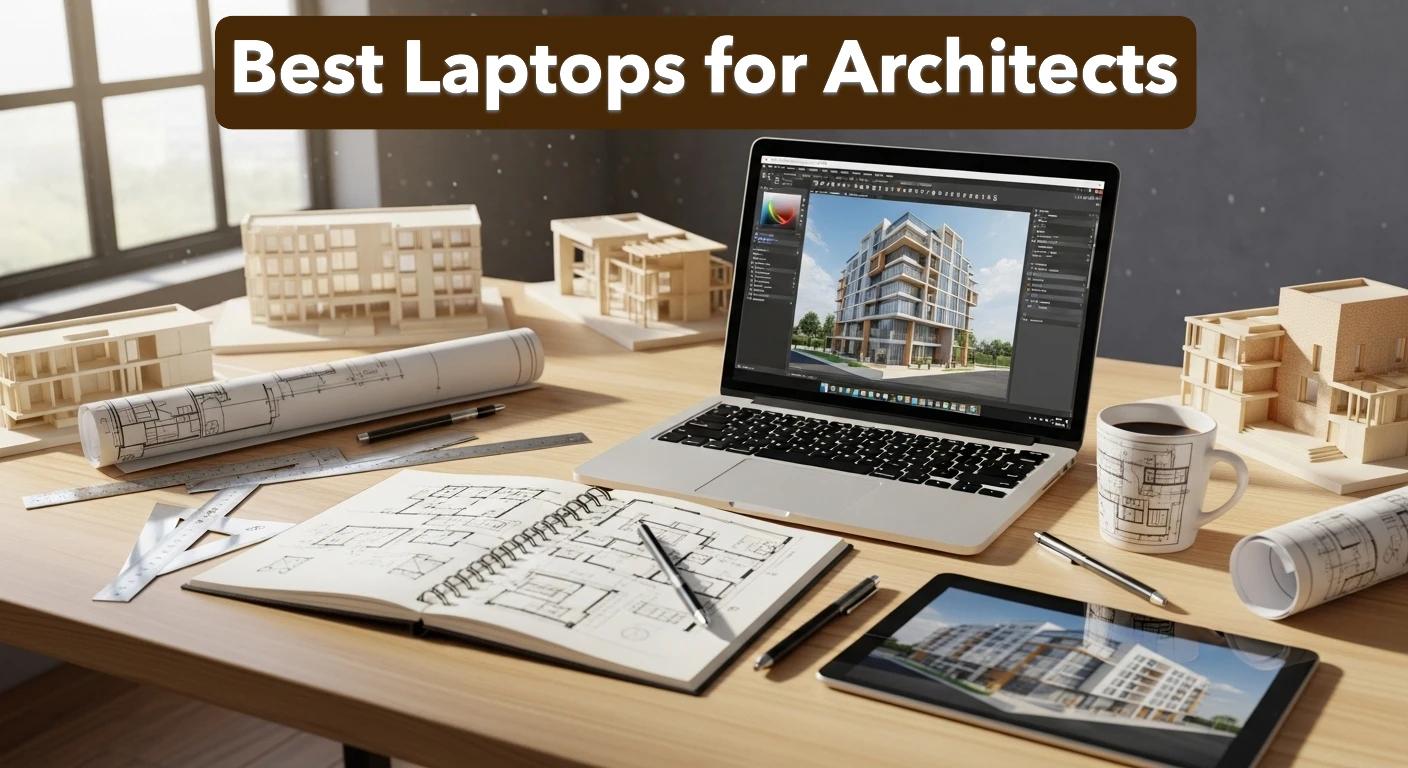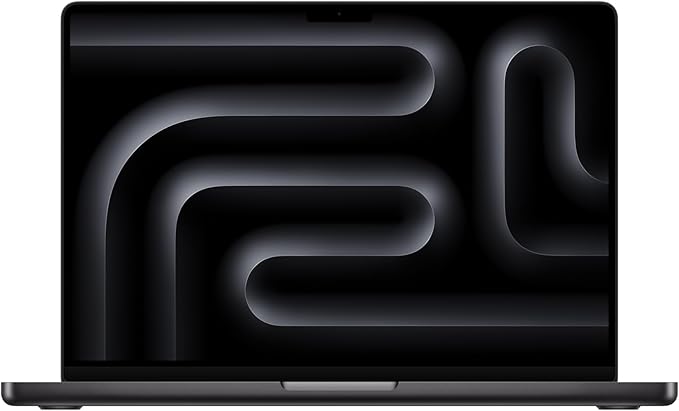If you’re an architect, you already know your laptop isn’t just a gadget—it’s your sketchbook, design studio, and presentation tool all rolled into one. In 2025, the right laptop can make the difference between smooth rendering sessions and frustrating slowdowns. That’s why we’ve pulled together a list of the best laptops for architects this year—powerful, reliable machines that can actually keep up with your creativity and workload.
Also Read: Best Laptops for Architecture Students
Laptop Requirements for Architects
- Processor: Intel Core i7 or AMD Ryzen 7 (or higher)
- RAM: 16GB (or more)
- Graphics card: Dedicated NVIDIA RTX 3050 or AMD Radeon RX 6600 (or better)
- Storage: 512GB SSD (or more)
- Display: 15.6-inch Full HD (or larger)
Top Laptops Every Architect Will Love in 2025
- Apple MacBook Pro Laptop M4 Pro chip ($2,399)
- MSI Creator Z17 HX Studio Laptop ($3,814)
- Dell Newest XPS 9710 Business Laptop ($1,599)
- ASUS Creator Laptop Q530 ($1,309)
- Acer Nitro 5 Gaming Laptop ($770)
- HP Newest Envy 17 Laptop ($1,184)
1. MacBook Pro (Best laptop for architects 2025)
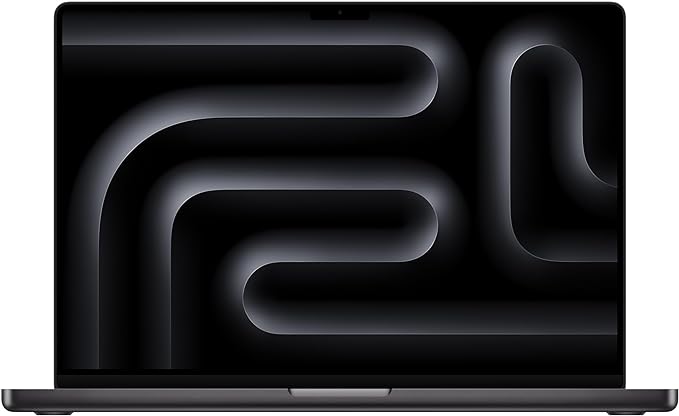
| Model Name | MacBook Pro |
| Screen Size | 16.2 Inches |
| Hard Disk Size | 512 GB |
| Ram Memory Installed Size | 18 GB |
| Operating System | Mac OS |
| Graphics Coprocessor | Apple Integrated Graphics |
The MacBook Pro with the M4 Pro or M4 Max chip offers a compelling choice for architects due to its powerful specifications and features tailored for demanding design workflows. Here are some key points that make it a strong contender among the best laptops for architects:
- Exceptional Performance: The M4 Pro chip, boasting a 12-core CPU and 18-core GPU (or the M3 Max with up to a 16-core CPU and 40-core GPU), ensures remarkable performance. Architects dealing with resource-intensive tasks like rendering 3D content or developing complex models will benefit from the laptop’s processing capabilities.
- Extended Battery Life: With up to 22 hours of battery life, architects can work on the go without constantly worrying about running out of power. The power-efficient design of Apple silicon ensures consistent performance whether the laptop is running on battery or plugged in.
- Brilliant Pro Display: The 16.2-inch Liquid Retina XDR display, featuring Extreme Dynamic Range and high brightness levels, provides a stunning visual experience. Architects can manipulate detailed designs with precision, thanks to the display’s clarity and color accuracy.
- Compatibility with Professional Software: The MacBook Pro is fully compatible with a range of professional applications critical for architects, including Adobe Creative Cloud, Apple Xcode, and other design tools. This ensures a seamless and efficient workflow for architectural projects.
- Advanced Camera and Audio: The 1080p FaceTime HD camera, three-mic array, and six-speaker sound system with Spatial Audio enhance the laptop’s capabilities for virtual meetings, presentations, and collaborative discussions, which are essential aspects of an architect’s work.
- Versatile Connectivity Options: The MacBook Pro offers a variety of ports, including Thunderbolt 4, HDMI, SDXC card slot, and a headphone jack. This facilitates easy connectivity to external devices, additional displays, and other peripherals, supporting the diverse needs of architects.
- Magic Keyboard with Touch ID: The backlit Magic Keyboard with a full-height function key row and Touch ID provides a comfortable and secure typing experience. It streamlines access to the laptop and authentication for enhanced security.
- Apple Ecosystem Integration: Architects can leverage the seamless integration with other Apple devices, enhancing productivity by easily sharing content between devices and using the MacBook Pro for FaceTime calls or messaging.
- Built to Last: The durable all-aluminum unibody enclosure and regular free software updates contribute to the longevity of the MacBook Pro, ensuring that it remains a reliable tool for architectural professionals over the years.
In conclusion, the MacBook Pro with M4 Pro or M4 Max is an excellent choice for architects seeking a high-performance, reliable, and feature-rich laptop that can handle the complexities of architectural design and visualization.
2. MSI Creator Z17 HX Studio Laptop
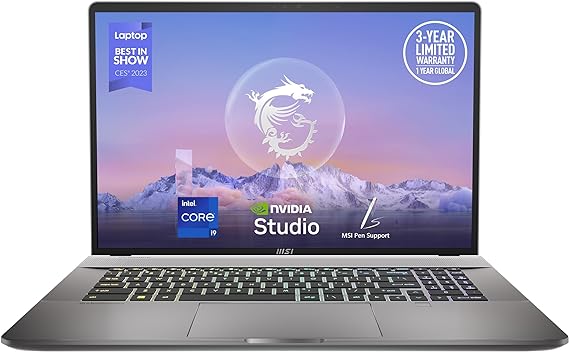
| Model Name | Creator Z17HXStudio A13VGT-065US |
| Screen Size | 17 Inches |
| Color | Lunar Gray |
| Hard Disk Size | 2 TB |
| CPU Model | Core i9 |
| Ram Memory Installed Size | 64 GB |
| Operating System | Windows 11 Pro |
| Special Feature | Pen |
| Graphics Card Description | GeForce RTX 4070 Dedicated |
The MSI Creator Z17 HX Studio Laptop appears to be a strong contender for architects due to its powerful specifications and features tailored to demanding tasks like design, rendering, and multitasking. Here are several aspects that make it a good choice for architects:
- 13th Gen. Intel Core i9 Processor: The inclusion of a high-performance 13th Gen. Intel Core i9 processor ensures that architects can handle resource-intensive tasks such as 3D modeling, rendering, and complex design software with ease. This processor provides the necessary power for a seamless and responsive experience.
- Windows 11 Pro: The laptop comes with Windows 11 Pro, offering enhanced performance and features that can benefit professionals. The intuitive navigation and faster performance make it well-suited for multitasking work, which is essential for architects who often need to run multiple design applications simultaneously.
- QHD+ Display with 165Hz Refresh Rate: The 17″ QHD+ display with a 16:10 aspect ratio and 165Hz refresh rate is well-suited for architectural work. The higher resolution and color accuracy (100% DCI-P3) provide architects with a detailed and vibrant visual experience, crucial for tasks like editing and reviewing intricate designs.
- Flip-n-Share Design: The 180° lay-flat design and ultra-thin bezels enhance collaboration among architects. This feature makes it easy to share ideas and designs with co-workers, fostering uninterrupted communication and collaboration during group discussions or presentations.
- Cooler Boost 5 Technology: Architects often engage in resource-intensive tasks that generate heat. The Cooler Boost 5 technology ensures optimal thermal dissipation, preventing overheating during prolonged usage. This is essential for maintaining consistent performance and prolonging the laptop’s lifespan.
- Maximized Screen Real Estate: The ultra-thin bezels maximize screen real estate, providing architects with ample space to work on complex designs. The 16:10 aspect ratio is particularly beneficial for architectural applications, offering a more spacious canvas for drafting and designing.
In summary, the MSI Creator Z17 HX Studio Laptop combines a powerful processor, high-resolution display, collaborative design features, and effective cooling technology, making it a solid choice for architects who require a high-performance machine for their demanding design and rendering tasks.
3. XPS 9710 (Best Dell laptop for architects)
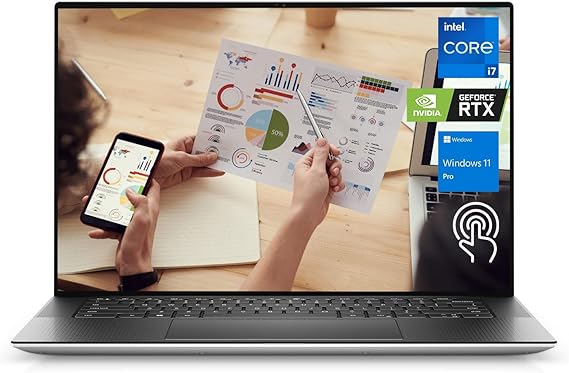
| Model Name | XPS 9710 |
| Screen Size | 17 Inches |
| Color | Silver |
| Hard Disk Size | 1 TB |
| CPU Model | Core i7 Family |
| Ram Memory Installed Size | 32 GB |
| Operating System | Windows 11 Pro |
| Special Feature | Backlit Kb |
| Graphics Card Description | GeForce RTX 3060 Dedicated |
The Dell XPS 9710 Business Laptop appears to be an excellent choice for architects due to several key features that cater to their specific needs:
- High-Performance Configuration: The laptop is equipped with an Intel Core i7-11800H processor, featuring 8 cores and 16 threads. This powerful CPU, combined with a high-speed 32GB DDR4 RAM, ensures smooth multitasking capabilities, which is crucial for architects working with resource-intensive design software.
- Graphics Capabilities: The inclusion of an NVIDIA GeForce RTX 3060 with 6GB VRAM provides robust graphics performance. This is essential for architects who often work with complex 3D models and rendering tasks, ensuring a seamless and efficient design process.
- Ample Storage and Fast Data Access: The 1TB PCIe Solid State Drive not only offers substantial storage space but also ensures quick data access. Architects dealing with large project files and high-resolution visuals will benefit from the speed and responsiveness provided by the SSD.
- High-Resolution InfinityEdge Touch Display: The 17.0″ UHD+ InfinityEdge display with a resolution of 3840 x 2400 provides a stunning visual experience. Architects can appreciate the fine details of their designs, enhancing the accuracy and precision of their work.
- Connectivity Options: The laptop’s connectivity options, including 4 x Thunderbolt 4 ports and a full-size SD card reader, are advantageous for architects who often need to transfer large files or connect to external devices such as drawing tablets and high-resolution monitors.
- Portability and Security: Despite its powerful features, the laptop remains relatively portable, allowing architects to work on-the-go. The inclusion of a fingerprint reader adds an extra layer of security, crucial for protecting sensitive architectural designs.
- Optimized for Windows 11 Pro: The operating system, Windows 11 Pro, provides architects with an organized and intuitive workspace, helping them optimize productivity. Enhanced collaboration features can also facilitate teamwork, which is often essential in architectural projects.
In summary, the Dell XPS 9710 combines powerful hardware, a high-resolution display, and a range of connectivity options, making it an ideal choice for architects who demand performance, reliability, and versatility in their professional laptops.
4. Creator Q530 (Best Asus laptop for architects)

| Model Name | Creator Laptop Q |
| Screen Size | 15.6 Inches |
| Color | Black |
| Hard Disk Size | 1 TB |
| CPU Model | Core i7 Family |
| Ram Memory Installed Size | 32 GB |
| Operating System | Windows 11 Pro |
| Graphics Card Description | NVIDIA GeForce RTX 3050 Dedicated |
The ASUS Creator Laptop Q530 offers a comprehensive set of features that make it an excellent choice for architects:
- Powerful Processor: The 13th Generation Intel Core i7-13620H 10-Core processor provides ample power for handling complex architectural software and multitasking efficiently.
- Ample Memory: With 32GB DDR5 SDRAM clocked at 4800 MHz, architects can run multiple design software simultaneously without experiencing slowdowns or bottlenecks.
- Fast Storage: The 1TB NVMe M.2 Solid State Drive ensures swift boot times and quick access to large design files, allowing architects to work seamlessly.
- High-Resolution OLED Display: The 15.6″ FHD OLED Display with 600 nits brightness and 100% DCI-P3 color gamut delivers crisp, accurate visuals, ideal for reviewing detailed architectural drawings and renderings.
- Graphics Performance: The NVIDIA GeForce RTX 3050 GPU with 6GB GDDR6 memory provides ample graphics power for rendering complex 3D models and visualizations.
- Connectivity Options: A variety of ports including Thunderbolt 4, USB 3.2 Gen 2, HDMI v2.1, and LAN ensure compatibility with external displays, peripherals, and networking equipment.
- Portability: Despite its powerful hardware, the laptop remains relatively lightweight at 3.97 lbs and boasts a sleek design, making it convenient for architects to carry between job sites or meetings.
- Long Battery Life: The 90Whr battery offers up to 8 hours of non-gaming battery life, providing architects with extended productivity without needing to constantly search for power outlets.
- Additional Features: The inclusion of a full-size backlit keyboard with a fingerprint reader, along with a 3DNR FHD webcam and integrated microphone, enhances usability and security for architects working remotely or collaborating with clients.
Overall, the ASUS Creator Laptop Q530 combines robust performance, stunning display quality, and versatile connectivity options, making it an excellent choice for architects who demand power and flexibility in their computing devices.
5. Acer Nitro 5 (Best gaming laptop for architects)
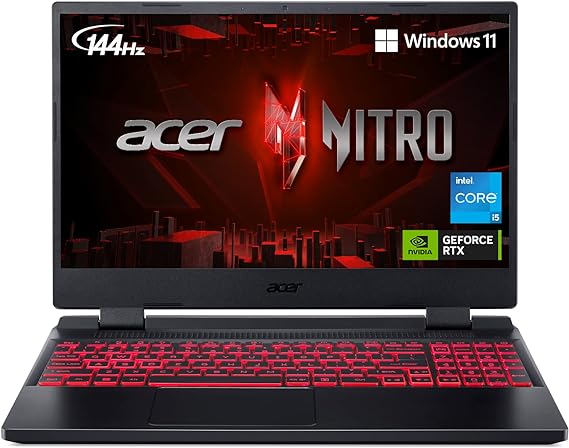
| Model Name | AN515-58-57Y8 |
| Screen Size | 15.6 Inches |
| Color | Black |
| Hard Disk Size | 512 GB |
| CPU Model | Core i5 |
| Ram Memory Installed Size | 16 GB |
| Operating System | Windows 11 Home |
| Special Feature | Backlit Keyboard |
| Graphics Card Description | NVIDIA GeForce RTX 3050 Dedicated |
The Acer Nitro 5 with its robust specifications presents itself as a strong contender for architects looking for a reliable and powerful laptop. Here’s why it’s a good choice:
- Performance: The 12th Gen Intel Core i5 processor coupled with 16GB DDR4 RAM ensures smooth multitasking and handling of resource-intensive architectural software like AutoCAD, Revit, or SketchUp.
- Graphics Capabilities: The NVIDIA GeForce RTX 3050 Ti graphics card with 4GB dedicated GDDR6 VRAM brings ray tracing capabilities and supports DirectX 12 Ultimate, crucial for architects working with 3D rendering and visualization tasks.
- Display Quality: Architects rely heavily on accurate and vibrant displays for detailed designs. The 15.6” Full HD IPS display with a 144Hz refresh rate delivers crisp visuals, ensuring precision in design work.
- Storage and Expandability: The 512GB PCIe Gen 4 SSD provides ample storage for large architectural files and software installations. Additionally, the provision for expanding storage through PCIe M.2 slots and a 2.5″ hard drive bay allows for future scalability.
- Connectivity: Killer Ethernet E2600 and Killer Wi-Fi 6 AX1650 ensure stable and high-speed internet connectivity, essential for collaborating with teams or accessing cloud-based resources. The array of USB ports, including Thunderbolt 4, offers versatility in connecting external devices.
- Cooling System: Architects often engage in prolonged work sessions, making efficient cooling crucial to prevent thermal throttling. The dual-fan cooling system with quad-exhaust port design ensures optimal thermal management, maintaining performance during extended usage.
- Portability: Despite its powerful hardware, the Acer Nitro 5 maintains a relatively compact form factor, making it suitable for architects who need to work on the go. Its dimensions and weight make it easy to carry between job sites or client meetings.
- Warranty: The inclusion of a one-year international travelers limited warranty provides peace of mind for architects who may need support while traveling or working abroad.
In summary, the Acer Nitro 5 offers a well-rounded package of performance, graphics capabilities, display quality, connectivity options, and portability, making it an excellent choice for architects needing a versatile and powerful laptop for their design work.
6. HP Newest Envy 17 Laptop
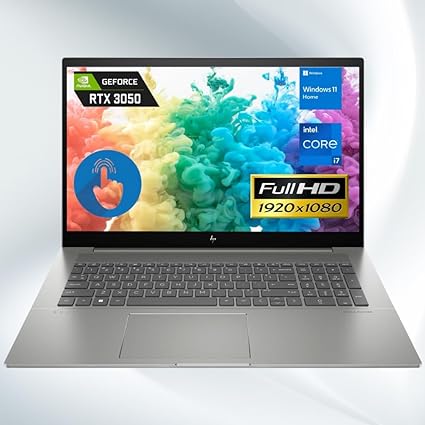
| Model Name | TPN-C160 |
| Screen Size | 17.3 Inches |
| Color | Gray |
| Hard Disk Size | 1 TB |
| CPU Model | Core i7 Family |
| Ram Memory Installed Size | 64 GB |
| Operating System | Windows 11 Home |
| Special Feature | Backlit Kb |
| Graphics Card Description | NVIDIA RTX 3050 Dedicated |
The HP Envy laptop with the specified features is an excellent choice for architects due to several key factors:
- High-Speed RAM and Enormous Storage: The 64GB high-bandwidth DDR4 RAM ensures that architects can smoothly run demanding applications like AutoCAD, Revit, and other 3D modeling software alongside multiple browser tabs and other programs. The 1TB PCIe NVMe M.2 Solid State Drive provides ample storage for large project files and quick access to data, enhancing overall productivity.
- Powerful Processor: The 13th Gen Intel Core i7-1355U Processor, with its 10 cores and 12 threads, delivers robust performance. Its high clock speed, which can reach up to 5.0 GHz, is crucial for handling complex computations and rendering tasks quickly, making it ideal for architecture software that requires significant processing power.
- Large FHD Touchscreen Display: The 17.3″ diagonal, FHD touchscreen (1920 x 1080) offers a large and vibrant workspace, which is essential for detailed design work. The touch functionality can be particularly useful for architects who prefer intuitive navigation and drawing directly on the screen.
- Comprehensive Connectivity Options: With 3 x USB 3.2 Type-A ports, 2 x Thunderbolt 4 ports, 1 x HDMI 2.1 port, a headphone/microphone combo, and an SD card reader, this laptop provides extensive connectivity options. These are crucial for architects who need to connect multiple peripherals, external displays, and transfer data quickly from various sources.
- Additional Features: The backlit keyboard allows for comfortable use in low-light environments, and the built-in webcam supports virtual meetings and presentations, which are increasingly common in modern architectural practices. Wi-Fi 6 ensures fast and reliable internet connectivity, which is essential for collaboration and accessing cloud-based resources.
- Operating System: Windows 11 Home offers a user-friendly interface with improved performance features and better multi-monitor functionality, which can be very beneficial for architects who often use multiple displays. The compatibility with Android apps can also be an advantage for those who use mobile apps in their workflow.
Overall, the combination of high-performance components, a large and responsive display, extensive connectivity options, and advanced operating system features makes this HP Envy laptop a powerful tool for architects, enhancing their ability to work efficiently and creatively.
Conclusion
At the end of the day, the “best” laptop really comes down to how you work and what feels right for you. Architects need a mix of power, reliability, and portability—and luckily, 2025 offers some incredible options that fit all kinds of budgets and workflows. Whether you’re sketching ideas, running heavy 3D models, or presenting to clients, the right laptop should feel like a trusted partner in your creative process. Choose the one that matches your style, and it’ll make your work smoother—and maybe even a little more enjoyable.
FAQs
There isn’t one single laptop all architects rely on, but many choose powerful machines like MacBook Pros, Dell XPS, or high-performance gaming laptops. The key is smooth performance with design software.
Look for a strong processor, plenty of RAM, and a good graphics card. Architects spend hours designing and rendering, so pick something reliable, comfortable, and with a sharp display.
At least 16GB is recommended, but 32GB makes everything run smoother—especially if you’re working with large 3D models or rendering projects.
